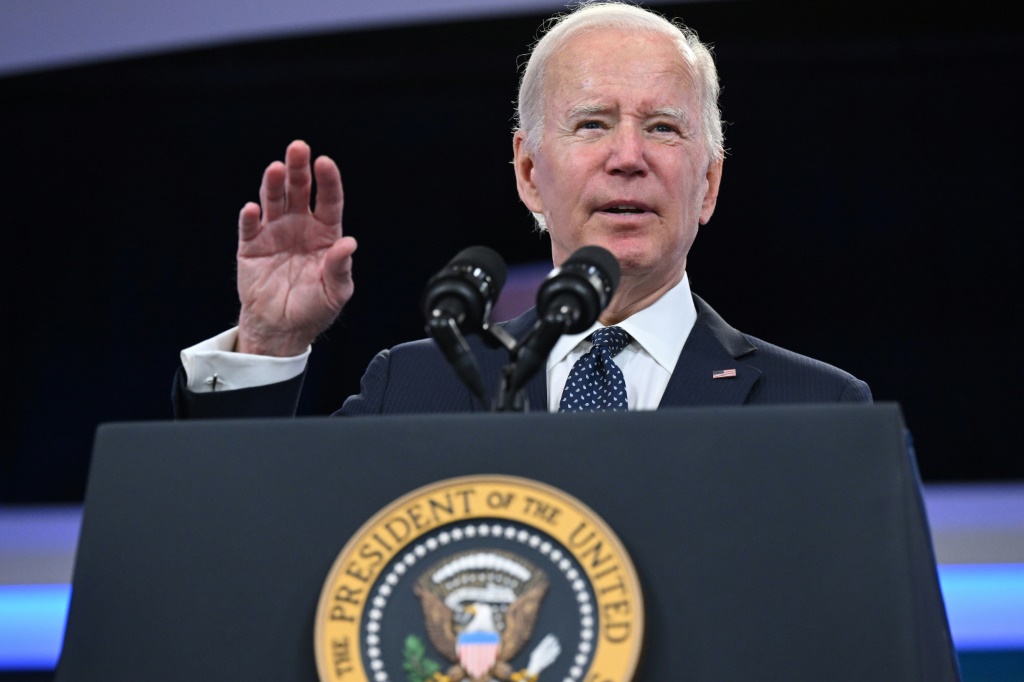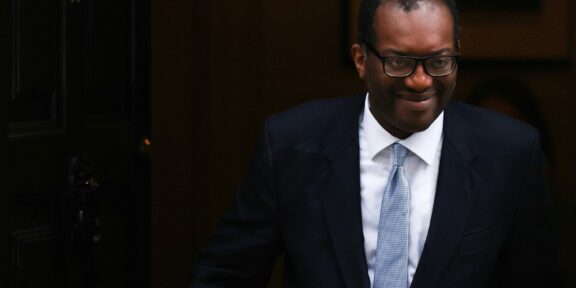The US economy rebounded in the third quarter, government data showed Thursday, in welcome news for President Joe Biden days before midterm elections, though analysts warn of a gloomier path ahead.

Economic issues have become a flashpoint in the United States, with decades-high inflation weighing on growth and squeezing households.
Fears of a downturn have intensified in the world’s biggest economy after two quarters of negative growth, commonly viewed as a strong signal that a recession is underway — a trend that would have global consequences and domestic political costs.
But gross domestic product rose for the first time this year, at an annual rate of 2.6 percent in the July to September period, according to Commerce Department data.
“Our economic recovery is continuing to power forward,” said Biden in a statement, later telling reporters that “things are looking good.”
But he also said that officials need to “make more progress” on bringing down costs for American households.
On Thursday, mortgage rates surged past seven percent for the first time in two decades according to the Freddie Mac survey, piling pressure on potential homebuyers.
The better-than-expected GDP performance was helped by strong trade, but housing investment plunged and weaker consumer spending on goods casts a pall on growth as higher prices bite.
Industrial supplies and materials, notably petroleum and products, kept exports robust.
In consumer spending, an increase in services was “partly offset” by a drop in products like motor vehicles and parts, along with food and beverages, data showed.
– ‘Unsustainable’ –
The leap in exports is “unsustainable,” as a strong dollar and weak global growth will pose constraints moving forward, cautioned Ian Shepherdson of Pantheon Macroeconomics.
“We’re relying on better consumption, rising government spending, and… investment to keep GDP in the black,” he added.
Overall, personal consumption expenditures — a key segment of the economy — grew 1.4 percent, slower than before.
The US economy shrank 0.6 percent in the second quarter, according to revised numbers, after a larger decline in the first three months this year.
Treasury Secretary Janet Yellen said Thursday that recent data signals the economy is shifting towards “sustainable growth.”
But analysts warn of risks ahead, as households grapple with soaring prices and draw down their savings.
Republicans have blamed Democrats for worsening price spikes through runaway spending, though inflation is a global issue over which presidents have limited power.
– Risks ahead –
Analysts see a slowdown in growth in the coming quarters, with the possibility of a recession in 2023.
“This will likely be the only positive quarter for the entire year,” said economist Diane Swonk of KPMG in a tweet.
While there is still some momentum in household spending and a rebound in business investment, there is also “ongoing weakness in residential investment,” added Rubeela Farooqi of High Frequency Economics.
There are particular risks to consumption “as households continue to face challenges from high prices and likely slower job growth going forward,” she said in an analysis.
Households have been reeling from decades-high inflation, with prices soaring on supply chain snarls due to Covid-19 lockdowns and fallout from Russia’s invasion of Ukraine, which sent food and energy costs rocketing.
To lower price pressures, the US central bank has embarked on aggressive rate hikes, walking a tightrope as it tries to avoid tipping the economy into a recession.
Already, there are signs of stress, such as a hit to the more interest-sensitive housing sector.
Rates on popular 30-year fixed-rate mortgages have also rocketed to 7.08 percent according to Freddie Mac, as the Federal Reserve’s moves ripple through the economy.
Policymakers are expected to press on with rate increases at a meeting next week, in the face of persistently high prices.








